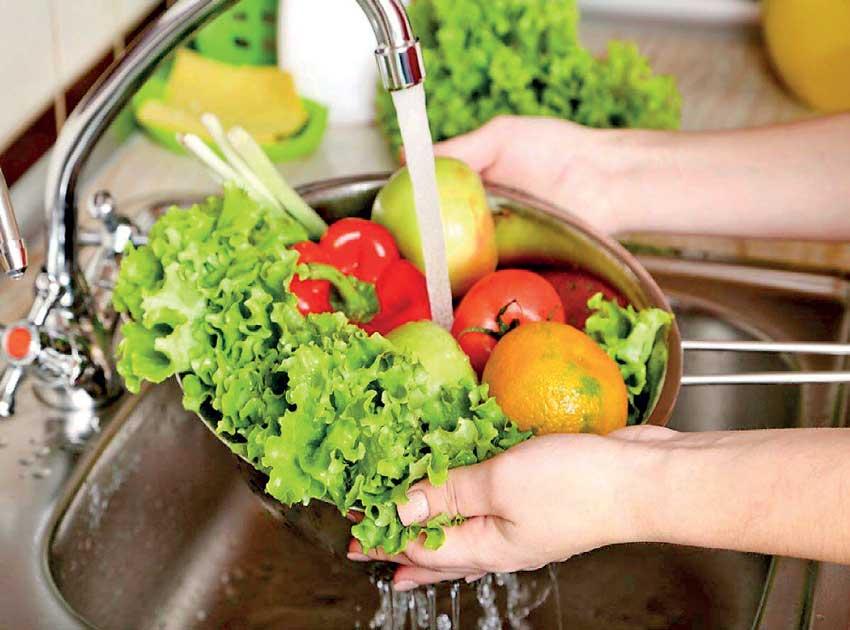11 Dec 2020 - {{hitsCtrl.values.hits}}

 These days people harbour some fear of getting infected with the coronavirus through food. As a result most people are afraid to dine outside. However, it is better to avoid susceptible food which can bring illnesses and infections. In this article we are going to discuss whether there is a possibility of COVID-19 being transmitted through contaminated, unprocessed or processed food.
These days people harbour some fear of getting infected with the coronavirus through food. As a result most people are afraid to dine outside. However, it is better to avoid susceptible food which can bring illnesses and infections. In this article we are going to discuss whether there is a possibility of COVID-19 being transmitted through contaminated, unprocessed or processed food.
From the beginning of this pandemic people have some belief that the consumption of live animals by the Chinese people was the main reason for the transmission of the COVID-19 virus from animals to humans. This is because the genome of SARS-CoV-2 is closely related to the genomes of the horseshoe bats. However, there is no study to date which confirms that COVID-19 spreads via food products. According to the WHO and FAO (Food and Agriculture Organization of the United Nations) currently there are no evidence that people can be infected by the COVID-19 virus via food. Moreover, there is no evidence to show that viruses which infect the respiratory tract can be transmitted via food or food packaging. This is because COVID-19 is a respiratory illness and the most possible transmission routes are respiratory droplets dispersed via talking, sneezing and coughing or direct contact with infected persons. The other suggested routes are fecal-oral transmission and through the transmission of contaminated objects.
People may harbour a doubt regarding the potential of the COVID-19 virus on the surface of the food. Actually food can be contaminated with the coronavirus. According to some studies, SARS-CoV-2 survived on stainless steel and plastic up to 2 and 3 days, respectively, at 21–23°C and a relative humidity of 40%. These results indicated that SARS-CoV-2 can be transmitted via contact surfaces because of the ability of the virus to survive on the food surfaces for several days. However, Coronaviruses cannot multiply in food since they need a live animal or human host to multiply and survive. To date, no study has investigated the survival of SARS-CoV-2 in foods. These results indicated that respiratory viruses may transfer from food surfaces to the hands and subsequently to the mouth, nose or eyes.
Moreover, the United States Food and Drug Administration (FDA), The European Food Safety Authority (EFSA), and the Australian and New Zealand Food Standards also stated that there’s no evidence of COVID-19 transmission from food. These statements are in-line with new research findings from USA and China using animal experiment to test whether virus SARS-CoV-2 can be transmitted through oral injections. Their results showed that when the virus was entering the gastrointestinal tract, it could not survive due to high acidity in the stomach.
However unfortunately, not all bacteria and viruses are easily destroyed by acid. Researchers found that the coronavirus stayed about as dangerous at a pH of 3.0 with compared to a neutral pH. But, the stomach pH of a fasting person is pretty acidic around 2.0 and when we have a meal the pH of the stomach immediately rises to a very neutral level of pH of 6.0, and doesn’t return to a pH of 2.0 for about 03 hours at which point half of the food in the stomach will already have passed to the small intestine.
In addition to that, before food goes to our stomach it runs and spends time in the esophagus which contains the ACE2 receptor on their surfaces. This receptor is like a lock, and the key is located on the spikes covering the virus.The coronavirus could theoretically infect us before even reaching the stomach. Other than esophagus this ACE2 receptor is found on many different types of cells such as lungs, stomach, small intestine, colon etc.
Furthermore, researchers have discovered that the cooking process, using heat, kills the virus. Therefore, thoroughly cooked food should be safe to consume. But, this virus is not more resistant to heat than the usual viruses and bacteria found in food. As recommended for good hygiene practice, foods should be cooked in temperatures that reach at least 70°C.
If you’re still concerned, it’s better to follow general food safety guidelines. Wash your hands for at least 20 seconds with soap and water after handling takeout containers and thoroughly wash fresh fruits, vegetables and other meats. Then transfer food to a clean dish using clean utensils. Wash your hands again before eating. After disposing of containers, clean and disinfect any surfaces that had takeout containers on them.
(The writer holds a MSc. Degree in Industrial and Environmental Chemistry from the University of Kelaniya, a BSc in Food Production and Technology and a Management degree from the Wayamba University of Sri Lanka)
21 Dec 2024 4 hours ago
21 Dec 2024 6 hours ago
21 Dec 2024 8 hours ago
21 Dec 2024 8 hours ago
21 Dec 2024 9 hours ago